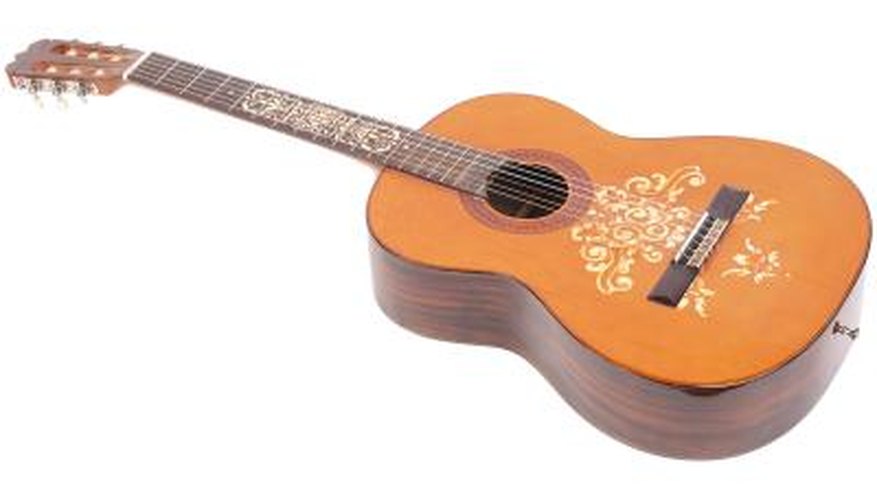Classical and flamenco guitar are often linked together because they both use nylon strings -- as opposed to the metal strings used in jazz, rock, blues and most other popular styles of music. There are, however, some fundamental differences, and the guitars themselves are a little different. Classical compositions can be played on a flamenco guitar, but a classical guitar requires some conversion before it is suitable for playing flamenco.
- Classical and flamenco guitar are often linked together because they both use nylon strings -- as opposed to the metal strings used in jazz, rock, blues and most other popular styles of music.
- Classical compositions can be played on a flamenco guitar, but a classical guitar requires some conversion before it is suitable for playing flamenco.
Add a golpeador. This is the most important step in converting a classical guitar for flamenco use. An essential part of flamenco technique is the "golpe" -- Spanish for "strike" or "tap" -- where the player taps on the guitar with his right hand while playing. The usual way to do this is by tapping the right ring finger tip into the guitar just below the strings. If you play flamenco on an unconverted classical guitar, the repeated tapping of the fingernail into the surface of the guitar will dig a hole. Flamenco guitars have a clear or white plastic plate that glues onto the guitar to protect it. You can buy these at a guitar shop, and it is best to have a professional glue it in place.
Change the strings from classical to flamenco. Classical strings have a deeper, richer sound, and the strings do not stand up to rough treatment. Flamenco strings are "brighter" and can take a lot of punishment. This is the most important change you can make to get the flamenco sound.
Use a cejilla -- a flamenco capo. Classical guitarists never use these, but they are sometimes used by folk musicians to match the guitar key to a singer's key. Flamenco guitarists may also do this when playing with a singer, but the main reason for using a capo is to lower the action of the strings. The capo moves all the strings closer to the fretboard, which makes it easier to play fast. Moving a couple of frets up the keyboard also puts the frets closer together, which makes some flamenco chords with extreme stretches easier to reach.
- Change the strings from classical to flamenco.
- Moving a couple of frets up the keyboard also puts the frets closer together, which makes some flamenco chords with extreme stretches easier to reach.
TIP
Unless you are playing with a singer, the cejilla should always be on the second fret. This gives the advantage of using a capo but also gives plenty of fretboard to work with. Some flamenco guitarists practice without the capo and then play with it.
WARNING
If you cannot get a Spanish cejilla, get one of the small capos used by folk musicians. The large metal capos used on metal string guitars make the guitar top heavy. It is difficult and tiring to hold a flamenco guitar in the proper position with a heavy capo attached.
